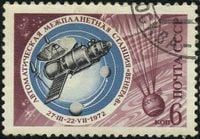A Soviet-era spacecraft, the Kosmos 482 probe, is set to crash back to Earth after more than 50 years in orbit. Originally launched in 1972 as part of a mission to Venus, the probe never made it to its intended destination due to a rocket malfunction that left it stranded in low Earth orbit. Now, experts predict it will re-enter our atmosphere within the next 48 hours, with the most likely landing time set for Saturday, May 10, 2025, around 12:37 PM AEST (Australian Eastern Standard Time).
As the Kosmos 482 probe spirals toward Earth, it is currently orbiting at altitudes ranging from 140 kilometers at its lowest to 260 kilometers at its highest. However, its orbit has been deteriorating steadily since its launch, and experts estimate that it will reach the critical point of no return at approximately 125 kilometers above the planet.
Bill Barrett, an orbital expert from Asia Pacific Aerospace Consultants, emphasizes the challenges of predicting the exact timing of such re-entries. "It's very hard just to predict when something like this is going to come back... it's one of the hardest things in orbital mechanics," he said. The Aerospace Corporation has been tracking the spacecraft using publicly available radar data from the US Space Surveillance Network, which predicts a re-entry window with a significant margin of uncertainty.
Marco Langbroek from Delft Technical University, who has been monitoring Kosmos 482 since 2019, suggests that the spacecraft might land about five hours later than the Aerospace Corporation's estimate, meaning it could crash back to Earth as early as 8 PM AEST on Friday, May 9, 2025, or as late as Sunday, May 11, 2025. Langbroek stated, "Over the past months, [our modeling] persistently pointed to re-entry within a few days of May 9 or 10."
Determining where the probe might land is even more complex than predicting when it will come down. Aerospace Corporation has created a prediction map showing the probe's ground track during the re-entry window, which covers a large portion of the Earth, including parts of Australia. Glen Henning, an engineer at Aerospace Corporation, reassures the public, stating, "Any of the gaps between the ground tracks are basically safe. Anything further north or further south is basically safe." As re-entry approaches, the number of ground tracks will decrease, but uncertainty remains until the probe actually crashes or burns up upon re-entry.
Experts believe there is a possibility the probe could crash somewhere in Australia, but Barrett points out that the satellite does not pass over any major cities. He explained, "The risk of the re-entry affecting a major population center in Australia... is low." The ocean, which covers about 70% of the Earth's surface, is the most likely landing zone for Kosmos 482, similar to previous uncontrolled re-entries, such as China's Long March 5B booster in 2022.
Despite the low risk of injury, experts advise caution. If anyone encounters debris from the probe, they should not touch it and should report it to the Australian government immediately. Current predictions suggest a 0.4% chance of serious injury or death to anyone on Earth from the spacecraft's re-entry.
One of the reasons for the difficulty in predicting the re-entry is the influence of solar activity. Marlon Sorge from Aerospace Corporation explains, "[The Sun] pretty much does whatever it wants to do. It's very hard to predict." Solar storms can cause the Earth's atmosphere to expand, which affects how quickly the spacecraft descends. Langbroek notes, "If solar activity in the coming days is higher than predicted, [Kosmos 482] will come down earlier. If it is lower, it will come down later." As the re-entry date approaches, experts will refine their predictions based on solar data.
For those hoping to witness the re-entry, tracking the probe's progress can be done through websites like Heavens Above and N2YO. However, visibility may be limited. Experts believe the probe, designed to withstand the harsh conditions of Venus, may not break apart as it enters Earth's atmosphere. Ralf Vandebergh, an amateur astronomer, captured images of the probe in 2014 and 2024, suggesting it might have a parachute. However, even if it does, it is unlikely to significantly slow its descent, which could reach speeds of around 250 kilometers per hour.
In summary, the Kosmos 482 probe is a relic of the Soviet space program, now making headlines as it prepares to make its long-awaited return to Earth. As experts track its descent, they grapple with the uncertainties of timing and location. While the risks remain low, the event serves as a reminder of the ongoing challenges of space debris management and the importance of monitoring objects in orbit.






